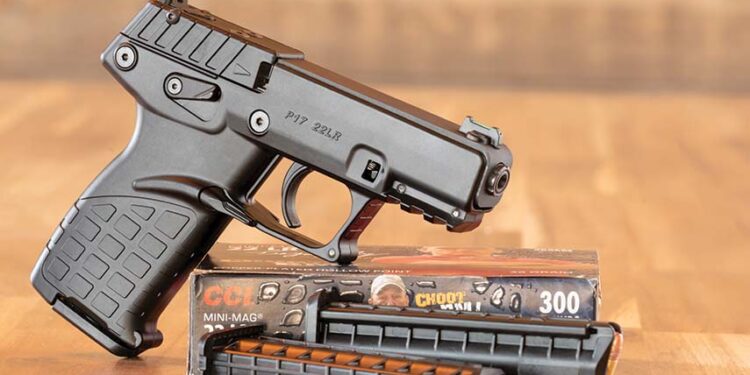Story & Photography by Oleg Volk
KelTec’s CP33 is an impressive pistol. It is currently the highest capacity, conventional rimfire handgun in production with 33-round flush and 50-round extended quad-stack magazines. Optics-ready, it’s a genuine 100-yard weapon even with the stock fiber optic sights: The long sight radius and the 8-inch barrel give it more reach than most .22s. It is suppressor-ready from the box, lightweight and easy to maintain. With all these complements to the uniquely competent design, why would KelTec follow-up almost immediately with another .22 pistol? I asked myself that question right up to the moment I had the opportunity to test fire the P17, a very pedestrian-looking stablemate to the futuristic CP33.
The two pistols have something in common: the trademark clamshell construction with steel receiver blocks inside. Beyond that, they are as different as can be, both in construction and in handling. Having both on hand, I found them impressive in completely different ways.
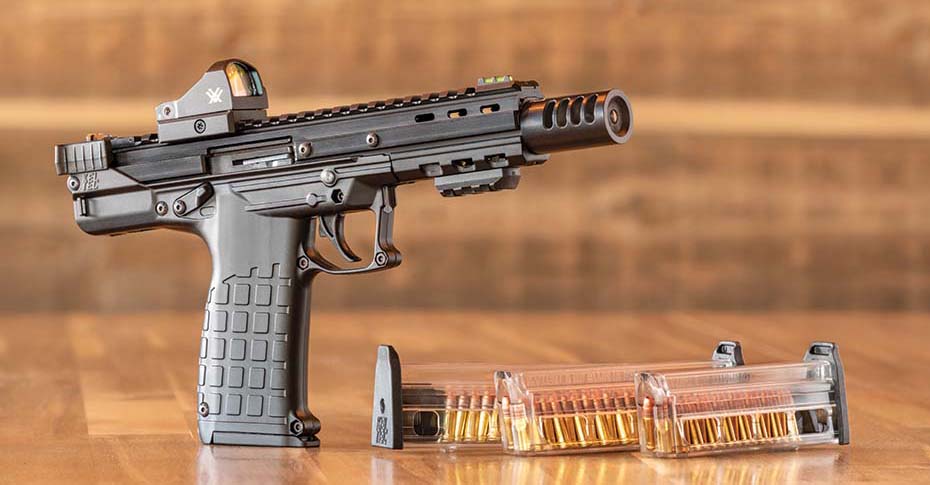
The CP33 is a large pistol at 10.6 inches long and pound and a half empty; it is more of a saddle gun for horseback, an ATV or a car than it is a dedicated carry solution. The voluminous magazines make it a fun plinker, but the real strengths are the mechanical accuracy and the neutral balance contributing to practical accuracy. Even moderately competent shooters can hit an 8-inch steel plate at 100 yards with the pistol unsupported. The barrel length gives up little velocity compared to rifles, simultaneously reducing the muzzle flash to a minimum. The 150fps advantage over 4-inch barrels gained with 40-grain CCI Mini Mags equals a 50-yard difference in performance. The uninterrupted expanse of the Picatinny rail on top lends itself to magnified optics to take full advantage of the potential reach. Sound-suppressed, the CP33 doesn’t have much gas blowback. It’s about as mild a semi-auto pistol as can be experienced. M-LOK slots in the forend provide options for lights and lasers and provide air circulation for the barrel. The CP33 does have a couple of minor downsides: The magazine loading is a process requiring care to avoid rimlock, and the grip matched the .22WMR PMR30 length—that’s too much for small hands.
Fortunately, both of these issues are easy to solve. Magazine loading becomes a breeze with an American Speedloaders device that enables placing all 33 cartridges in perfect alignment in about 20 seconds. The grip length would have been a factor in a pistol with heavy recoil, but with .22LR it merely means that the usual two-handed hold is more comfortable than a single-handed dueling stance.
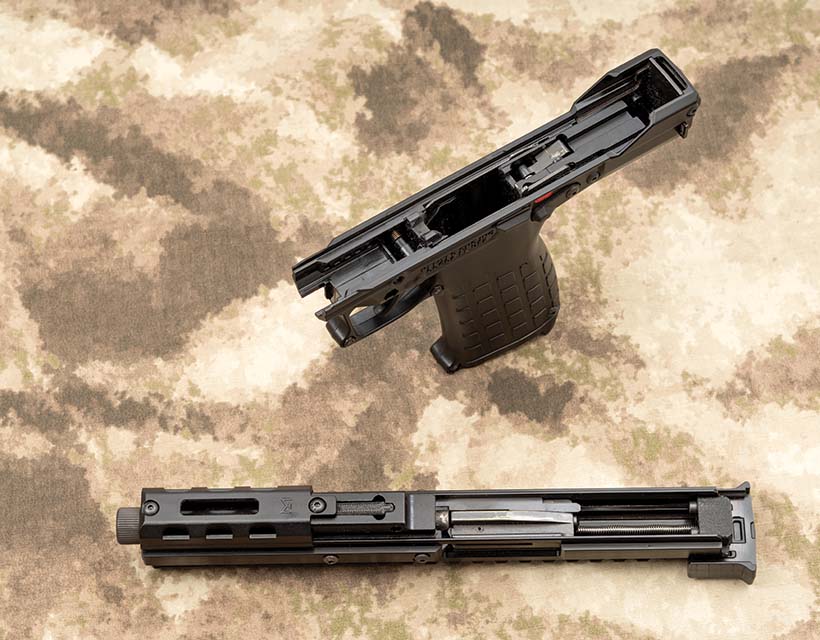
Having a CP33 introduces a high ammunition consumption habit. The barrel is well shrouded inside a ventilated forend, so the pistol can be run continuously for a long time with no loss of accuracy or functionality. A typical range session with a new shooter running the pistol and the instructor keeping magazines topped off ends with an empty 550-round box inside of 15 minutes, and that is with aimed fire rather than mindless blasting.
Most rimfire competitions assume 10-round magazines, but with the proliferation of new higher capacity pistols on the market, we are likely to see more Open Class stages in the immediate future. Judging by the interest that the Tandemkross-modified CP33 received at the World Championship Rimfire Challenge in October 2019, it will be a common firearm on the firing line before long.
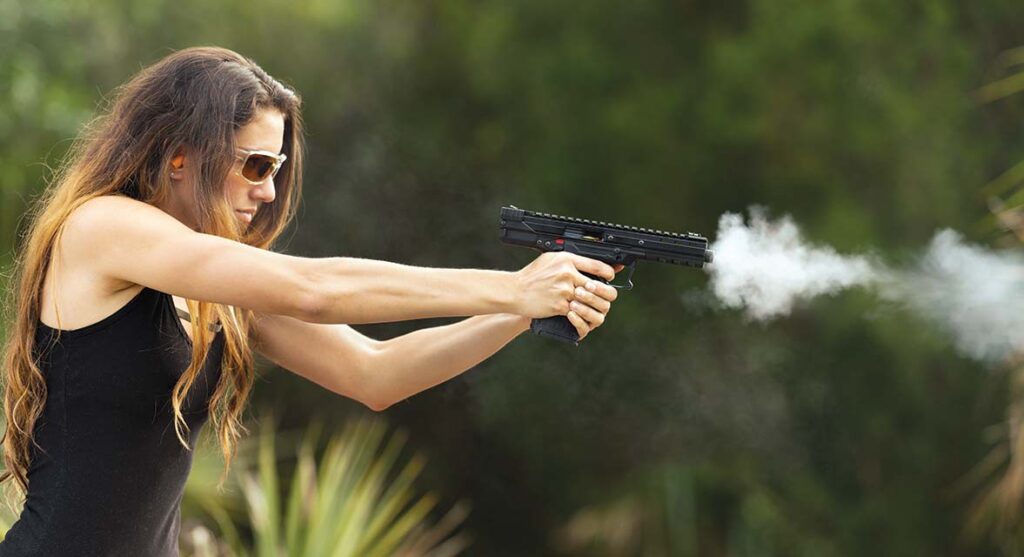
CP33 vs. P17
With all that awesomeness contained in the CP33, why did KelTec introduce a P17? At less than half the weight (0.7 pound) and less than half the price (MSRP: $199 vs. $475), this smaller pistol is more of a kit gun that goes anywhere effortlessly. While holding “only” 16 rounds in the magazine, the P17 ships with three of them! From the start, the P17 was designed as the lighter weight and more budget-friendly alternative to the Taurus TX22 which ships with two magazines for about twice the money. Unlike either the TX22 or the CP33, the P17 magazine requires no tools for quick and easy loading.
The construction of the P17 is quite unique, with an L-shaped steel slide enveloping only the top and the front of the barrel. The non-reciprocating sides of the clamshell grip frame go up to the top of the slide, permitting a very high two-hand grip with no moving parts to interfere. The CP33 accomplishes the came by enclosing the barrel and the bolt entirely, also allowing a high grip to control aim and what minimal recoil there is.
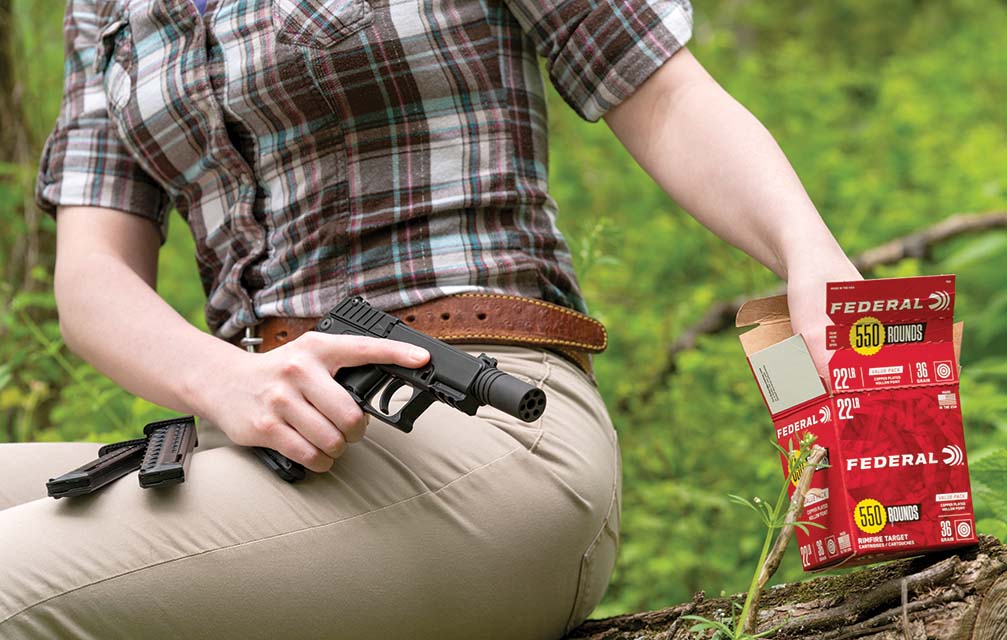
The P17 and CP33 both have 3-pound triggers, but the P17 has a longer travel and a more vigorous reset spring. The P17 trigger is optimized for rapid fire, while the CP33 is optimized for accuracy. Both can be shot fast, but with a very different feel. Both guns have fiber optic front sights and adjustable rear sights. The P17’s rear sight is not illuminated, so care must be taken to align the top of the notch with the top of the front sight rather than with the dot. For reactive fire, placing the dot at the top of the rear notch and aiming center mass produces a chest hit. Unlike the CP33, the P17 has no provision for mounting an optic. Considering the kit gun niche, it’s a reasonable compromise. The pistol does come with a Picatinny rail under the grip frame for mounting lights or lasers.
The P17 is an omnivore by design. Its release was delayed to ensure that it can digest subsonic ammunition reliably while not beating itself apart with high and hyper velocity loads. The CP33 was designed for supersonic loads, though it runs standard velocity and subsonics well when suppressed or when used with a brake, producing some back-pressure. Both rimfire brakes made by Tandemkross work well and eliminate what little muzzle rise there was. A Kaw Valley Precision Linear Compensator does nothing for the muzzle rise but reduces the report at the shooter’s ear by channeling it downrange, along with adding enough back-pressure to cycle standard velocity match loads which are already subsonic from the 8-inch barrel.
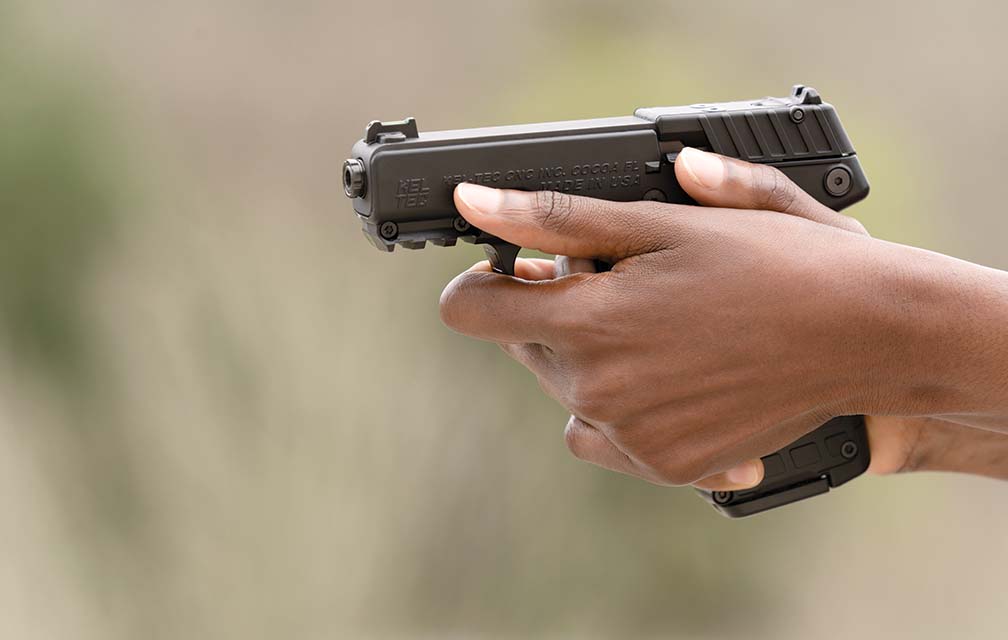
What does the P17 give up to the CP33? It has roughly half of the effective range of the bigger pistol, being accurate no further than 50 yards. I can hit an 8-inch plate no further than that, and even a full-size silhouette is a challenge at 100 yards. Pop cans, roughly approximating the size of a squirrel, are at risk no further than 35 yards. While the full-size grip and the good trigger help with accuracy, the limitations of the short sight radius are hard to overcome. Even so, being similar in weight and barrel length to the Smith & Wesson 317 kit gun, the P17 is more accurate, holds double the ammunition and boasts nearly twice the effective aimed range.
The P17 comes with an extended threaded bushing to permit suppressed use, but the open left side of the slide during the ejection cycle causes annoying blowback a the shooter. Given the very light weight and the visual incongruity of the short slide and the full-size grip, an A2 flash hider from an AR-15 would fit the P17 better than anything else—it would reduce visible flash and the muzzle rise both by altering the balance toward the front and by acting as a compensator. The P17’s takedown involves the slide coming off the barrel to the front, so any muzzle device would have to be removed with the bushing, but it would not have to be re-timed after fieldstripping.
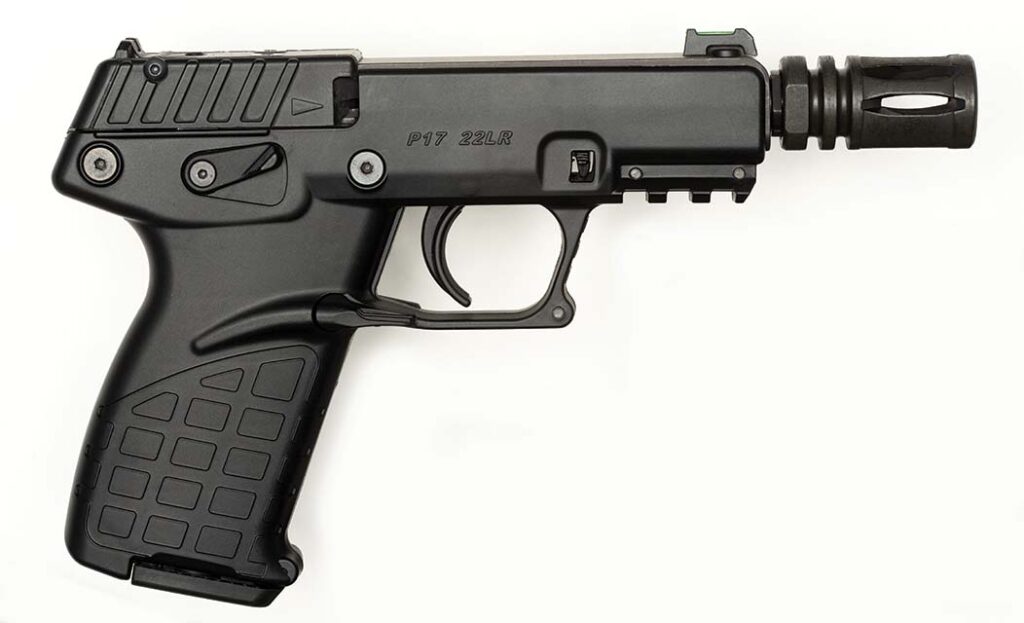
The same open slide design and a strong return spring make the P17 very resistant to powder residue. While the CP33 should be cleaned every 500 rounds, and every 250 to 300 when suppressed, the P17 has powered through nearly 1,000 rounds so far with no sign of slowing down. In an emergency, a P17 slide can be forced closed, while the internal CP33 bolt relies only on the return spring.
Both pistols are excellent guns. For traipsing around the woods for a week, the lighter, smaller and less expensive P17 fits the need. For riding on horseback or an SUV around a mountain range, the quieter, longer-ranged CP33 is the way to go. Both would work for competition, with the P17 having an edge for steel challenges and the CP33 excelling in bull’s-eye or silhouette shooting.
| This article first appeared in Small Arms Review V24N7 (Aug/Sep 2020) |



